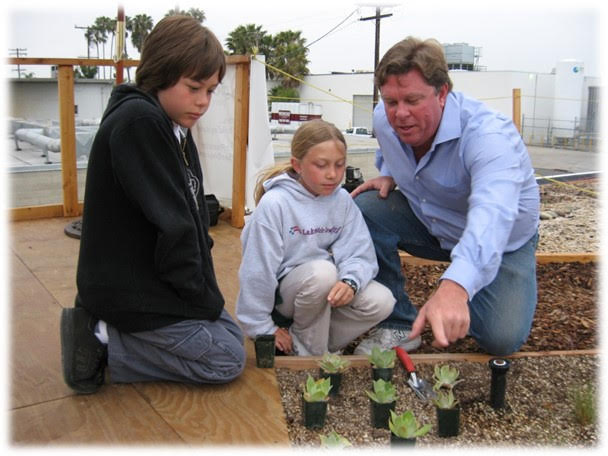
Introducing my son Ted and daughter Allie to plants and nature from an early age created a lifelong interest in our planet and all living things.
Parents used to worry about ways to keep their kids busy and out of trouble during their summer break from school. Now kids are on a never-ending spring into summer break, and it’s up to families to keep their education on track. I’ve never been so glad my kids are young adults now!
Learning doesn’t always have to mean books and staying indoors. Encourage your kids to do something that comes naturally. Let them get their hands dirty in fun gardening activities. Take advantage of San Diego’s weather (when the rain clears) to hold a living science class outdoors.
There are many age-appropriate opportunities for gardening and art projects that will instill a love of nature that will last a lifetime. Watching a seed grow seems like magic to a kid. Watching hummingbirds and butterflies visit flowers they’ve grown, or eating fruits and veggies from their own garden gives a real sense of pride to a kid.
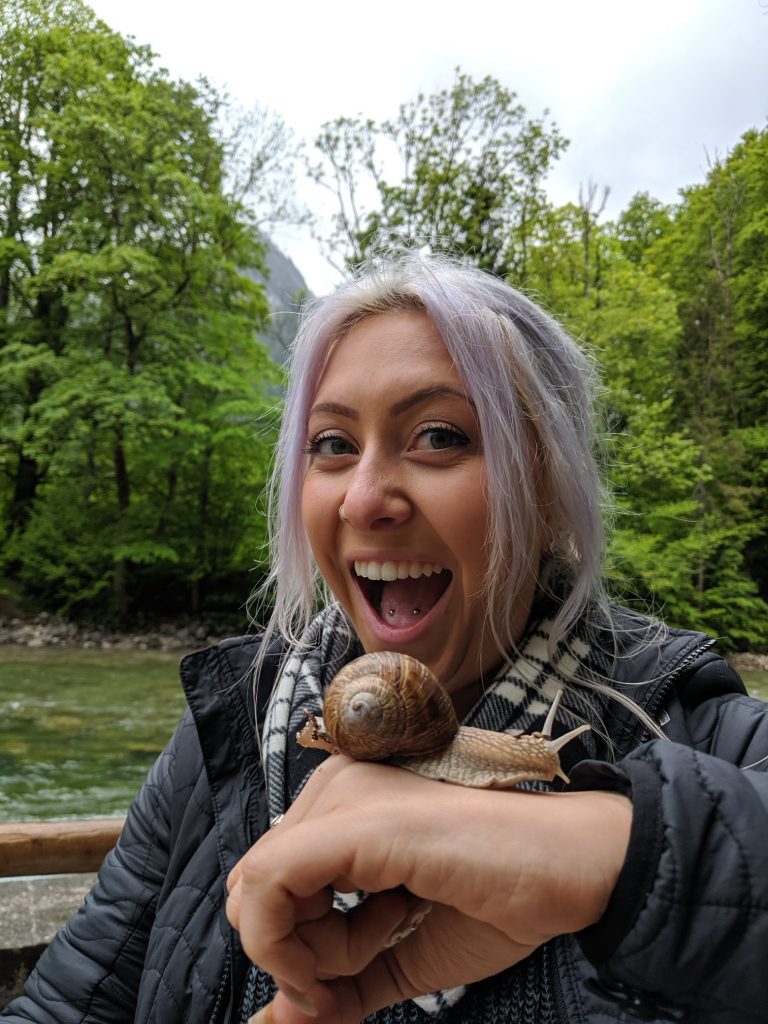
Years later, my daughter Allie still loves getting close to nature. Photo: Jim Mumford
You want your kids’ first projects to be successful. Choose plants that are easy to grow. Low-maintenance is a plus.
We hardly need to remind parents how impatient kids can be. Quick growing plants will keep your kids involved. Think sunflowers and cherry tomatoes, for example.
Let your kids do all the dirt-digging. Shovels or hands, it doesn’t matter as long as they wash up thoroughly. Observe differences in soil composition. Add mulch or whatever soil amendments are right for your area. Ask your local garden center or find a friendly group on social media.

My son Ted shares my love of nature and is always up for an adventure. I took this photo of him on the remote Osa Peninsula in Costa Rica when he was 19 years old. Photo: Jim Mumford
Some of our favorite plants for kids:
Sunflowers. Sunflowers are easy to grow, fast, and inexpensive. They’ll grow nearly anywhere with enough sun and a little water. There are many kinds. Grow from seeds. Plan them in a sunny spot protected from the wind. Against a fence or wall is perfect. Get your kids involved in a competition to see whose sunflower is tallest! Watch birds visit the flowers, but save a few seeds to grow your next crop. The main pest is slugs, so watch for them.
Strawberries. What kid doesn’t like strawberries? It’s easy to plant a terracotta strawberry pot and they are easy to find. You get great results from just a little effort. Strawberry pots are the perfect project if you don’t have any garden space. They fit on a porch, patio, or even a balcony. Ask for help at the nursery to buy different types of strawberry seedlings that produce strawberries at different times and you will have a crop all summer. Many have pretty leaves and flowers too.
Tomatoes. Tomatoes are nearly foolproof. You can grow them in the ground, in pots, or even with an aquaponic system. Choose cherry tomatoes for the youngest kids. Get a headstart with seedlings. Have your kids check the plants daily for pests like tomato worms and slugs, eww. They can drop them into soapy water.
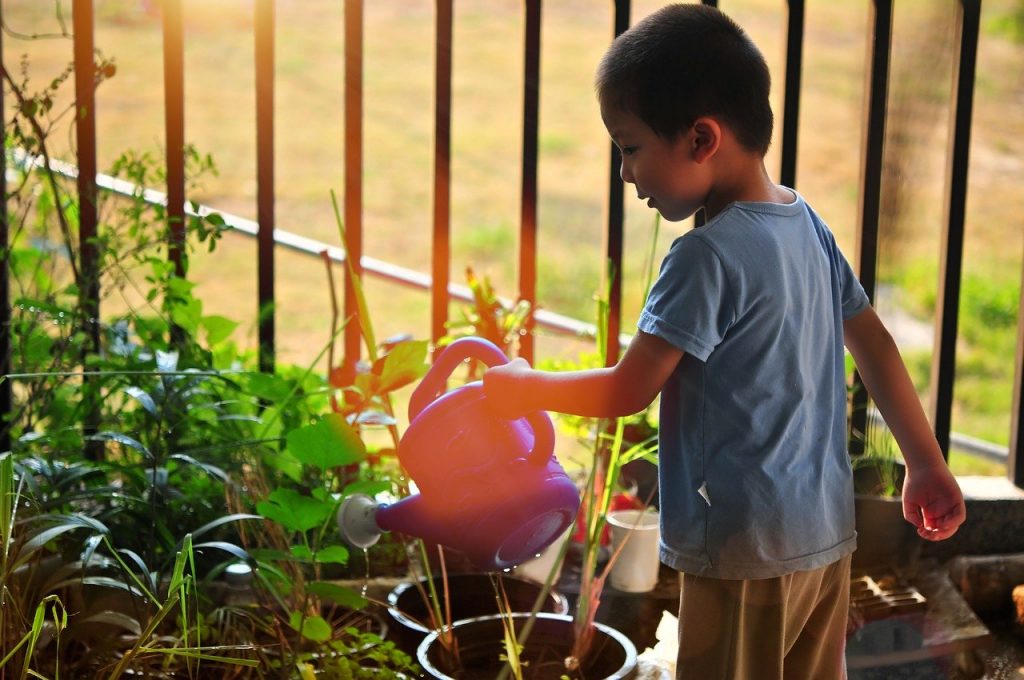
Kids love watching plants grow. It seems like magic! Photo: Princhit/Pixabay
Catnip. If your family includes a cat, grow catnip. Most cats go crazy for it. It grows from seeds, which can be started in small clay pots inside. When the plants spout, you can put them outside in the ground or on a patio. When the catnip is eight to ten inches long, cut it and tie it into bundles. Hang it upside down to dry in a dark, dry area like a closet. It will take a few weeks to dry. Then cut open a small cat toy, stuff it with catnip leaves, seal it and watch kitty go crazy over its treat.
Herb Garden. Explore the senses with an indoor herb garden. All you need is a sunny spot. You can transplant starters from nurseries nearly anywhere. Choose herbs for fragrance, for texture, for color, and shape.
More nature projects doubling as science lessons:
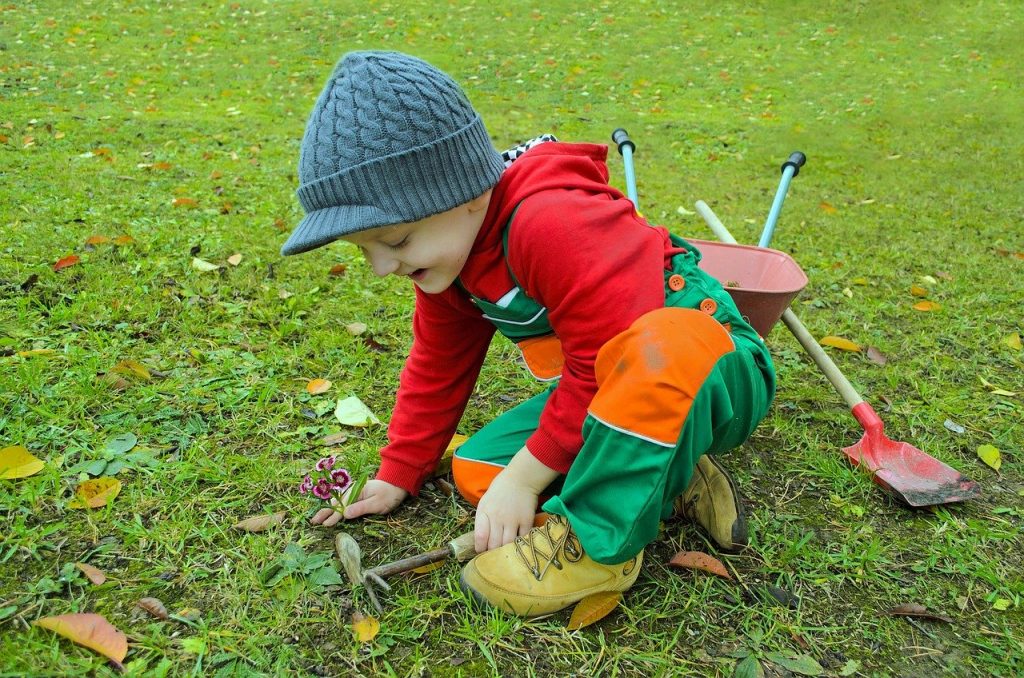
Take your kids to a nearby neighborhood park (with safe social distancing!) for a simple scavenger hunt. Photo: Pixabay
Nature Scavenger Hunt. If you aren’t up for gardening, take your kids on a scavenger hunt in your neighborhood or a nearby natural park or canyon edge. Be sure you’re practicing safe social distancing. Make a list of the plants and other items easily found. Make it easy for the younger kids, tougher for the older kids. Take photos of plants or critters you don’t know, and look them up later at home. Award a prize to whoever finds all the items the quickest and most accurately.
Make a Rooting Pot. With simple instructions from KidsGardening.org, your kids can learn about asexual plant propagation and have fun watching their plant clippings root and grow. You don’t need much more than a little vermiculite for potting medium, some pots, and scissors to get your clippings. Learn how here.
Grow Seeds in a Jar. This project is even easier and perfect for the youngest kids. All you need is a glass jar, enough paper towels to stuff the jar, water and seeds. Beans, peas, and sunflower seeds work great. Stuff the jar, lightly wet the paper towels, and put the seeds into the jar between the power towels and the outer glass. Keep the towels moist (not soaked), and put the jar in a warm spot with indirect sunlight. Let your kids predict how fast the seeds will grow!
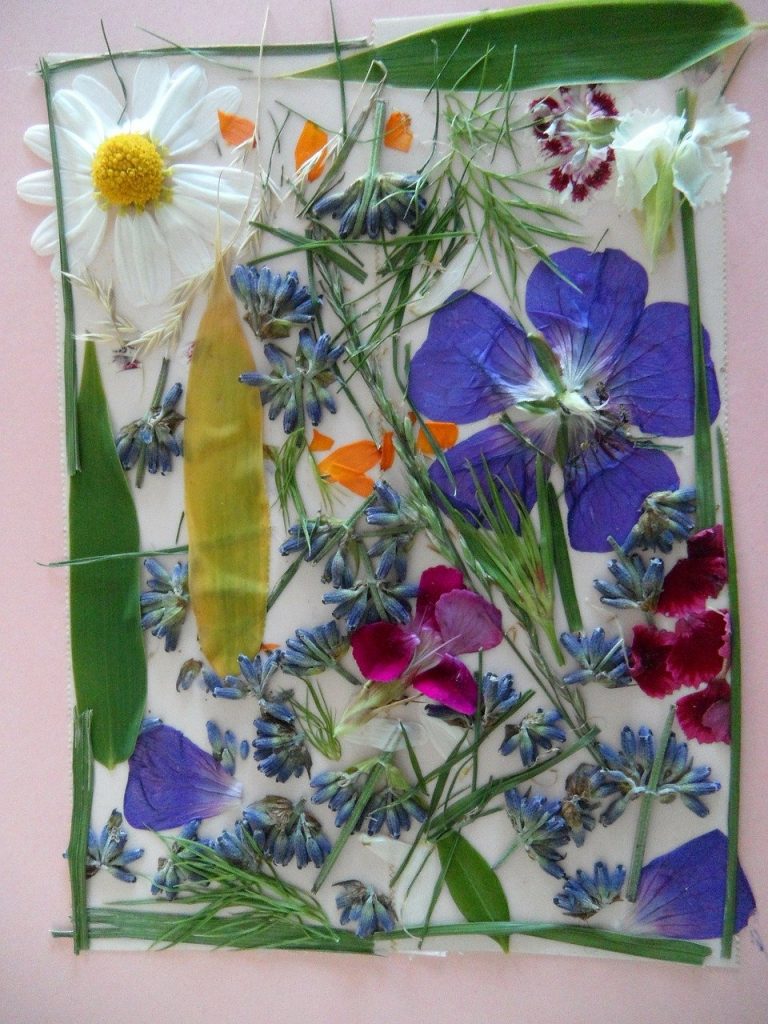
Even simple flowers from your yard can be preserved for art projects by pressing them. Photo: Pixabay
Press Flowers. This is such an old fashioned activity it will seem brand new to the smartphone generation of kids. Find pretty flowers in your garden or get some from a friend. (Don’t pick flowers without permission). Lay the flowers flat between a few sheets of paper. Press them flat between the pages of a large book and close it. Or get thick paper sheets and put the flowers in between. Pile heavy objects or other books on top and leave for a few days. Don’t peek! You can then glue them to a pretty background or put them in a frame.
Veggie Stamps. Have you ever used russet potatoes cut into shapes as stamps? You can use many types of veggies and fruits as stamps. If you have items past their prime, don’t let them go to waste. Cut potatoes, yams, apples, pears, carrots, turnips, even peppers into shapes. Carve designs into them. Wash, pat dry, then dip into water-soluble paint or dyes and stamp away. You can stamp brown paper and use it as wrapping. Or stamp cardboard boxes and use them for storage, pet toys, books, anything at all.
More resources to get kids interested in nature:
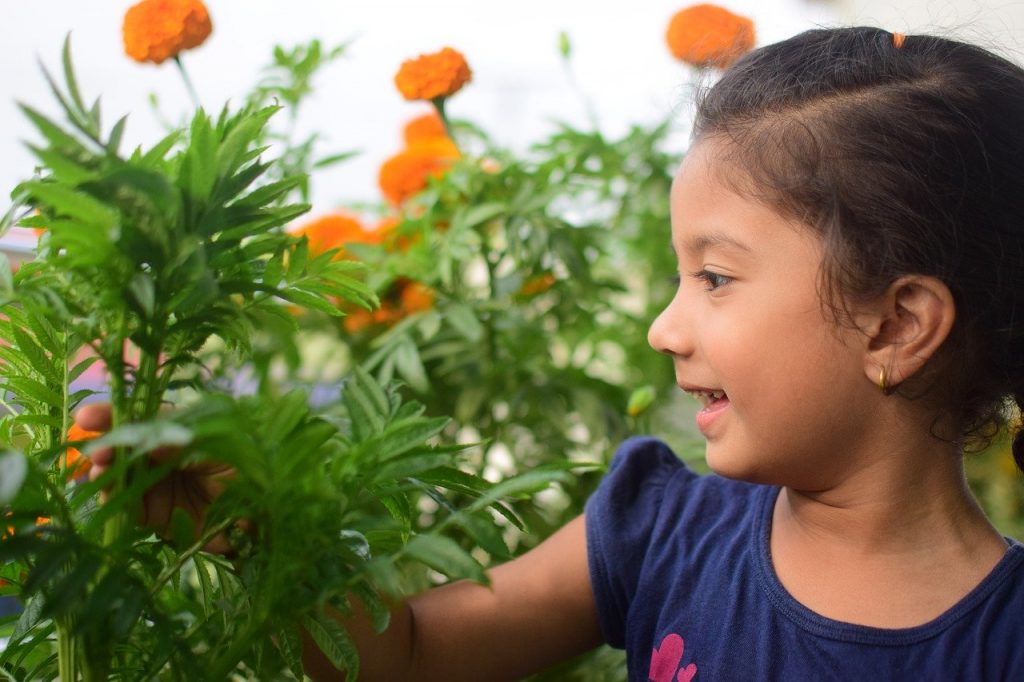
Kids learn about nature when they watch plants grow. Photo: Prashant Sharma/Pixabay
KidsGardening.org: This nonprofit group has really stepped up to give parents fun and easy to complete lessons about nature through gardening. No special tools or supplies needed.
LifeLab: Common Core and Science in the Garden: Fun gardening based science lessons for all grade levels.
Khan Academy: Khan Academy offers excellent science lessons worthy of any formal classroom for your older students in all subjects including the sciences, free of charge.
Do you have some nature project lessons to share? Share them on our Facebook page. We also love to see photos of your kids and their projects. Share them with us all spring and summer long.
Call on Good Earth Plant Company if we can enrich your life with plants.
